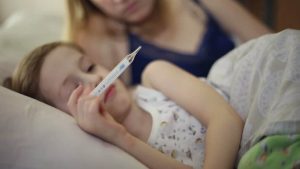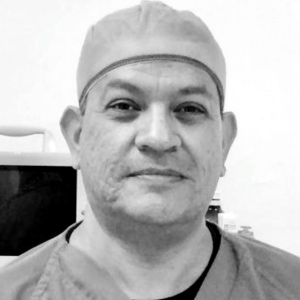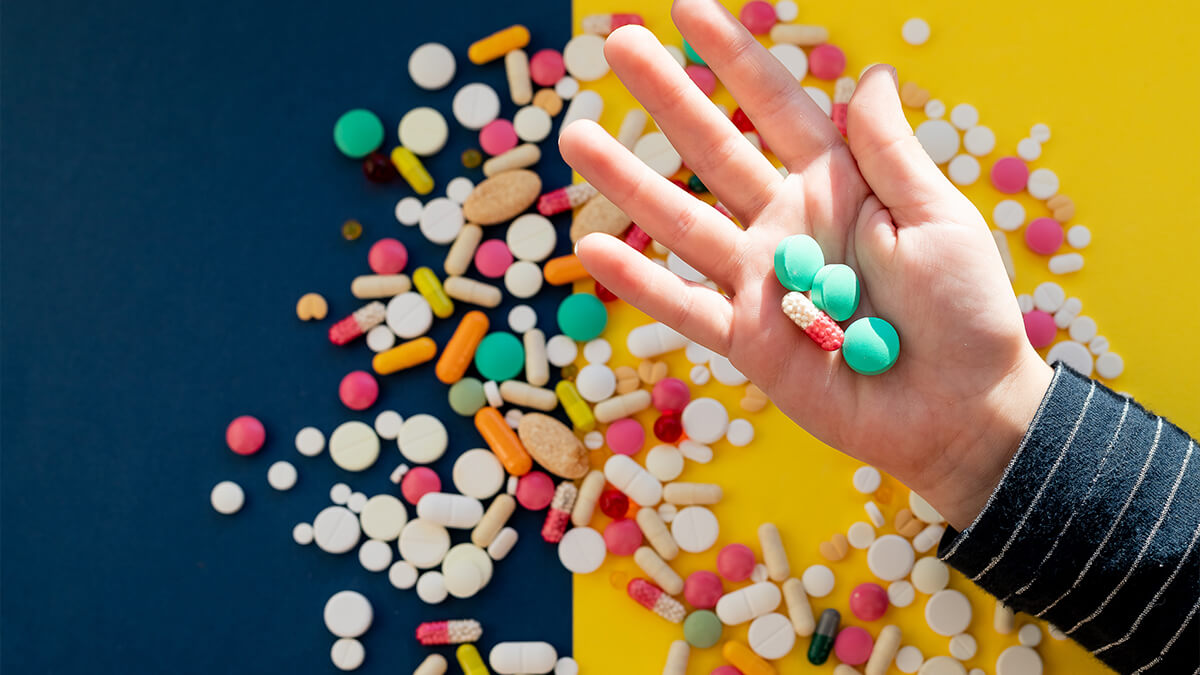Juvenile Dermatomyositis: Symptoms, Diagnosis and Treatment


Reviewed and approved by the doctor Nelton Ramos
Experts estimate that juvenile dermatomyositis currently affects between 3,000 and 5,000 children. The symptoms that come with it don’t make things at all easy for the child.
The most effective way to deal with this condition is to find out everything related to the disease, as well as following all the instructions from your doctors.
What is juvenile dermatomyositis?
Juvenile dermatomyositis is an autoimmune disease that causes muscle damage, due to blood vessels that are located under the skin and muscles becoming inflamed. Most commonly, it affects the skin on the knuckles, the edges of the eyelids and the joints of the fingers.
Autoimmune diseases are those in which the body itself damages tissue or healthy cells by confusing them with invading agents. The age at which this condition usually occurs is from 2 to 15.
Symptoms of juvenile dermatomyositis
In most cases, symptoms usually appear gradually. Each child experiences the symptoms in a different way. There are even those who suffer from a very severe form of the condition. Due to some of these more severe symptoms, some children won’t be able to perform certain activities.
The most common, although not the only ones, are:
- Rashes on the skin, face, knuckles, knees and elbows.
- A swelling of the eyelids and joints.
- Muscular weakness.
- Color change of the contour of the eyes (red or purple).
- Fever and fatigue.
- Difficulty swallowing, together with weakness in their voice.
- Acute abdominal pain caused by digestive ulcers.

Phases of the disease
This condition develops in the following 4 stages:
- Prodromal period. In this phase the symptoms are irregular and tend to be confused with other disorders. Consequently, it can last from weeks to months.
- Progressive muscle weakness and rashes. This process of the weakening of the muscles can take weeks to stabilize, and recovery can take up to 2 years.
- Muscle inflammation and rashes. This phase lasts up to 2 years.
- Recovery. There may be no lasting major consequences, while in other cases it can cause muscular atrophy and contractions.
“Although juvenile dermatomyositis has no cure, there are many patients who don’t have any severe symptoms for long periods of time”
Causes and diagnosis
To date, experts haven’t been able to determine the causes of this disease. However, what many specialists say is that it’s a malfunction of the immune system, and they believe that the diseases are hereditary.
To find out whether you have this disease, you should be given the following tests:
- A full medical examination.
- Laboratory tests: These tests will determine the presence of antibodies and muscle enzymes.
- Electromyography: Doctors use this to detect muscle or nerve injuries.
- Biopsy: Doctors will need to thoroughly examine some of your body tissue.
- X-ray: Here you can see if there is any damage to your bones or muscle tissue.
- MRI Scan: This is used as a last resort to see how much different organs have been affected.
Treatment for juvenile dermatomyositis
The type of treatment will depend on how much the disease has affected the patient. The treatment is primarily to reduce inflammation, and therefore avoid tissue damage.
It also aims to recover strength in the muscles, reduce pain and, in general terms, to improve the child’s quality of life.
Doctors approach this using different supportive treatments and a continuous multifaceted approach, including the following:
Medicine
The most frequent medicines are glucocorticosteroids and methotrexate. For the skin, antimalarial drugs such as hydroxychloroquine are used, along with sunscreen.

Therapies
Physiotherapy helps patients maintain and improve the flexibility and strength of their muscles. In addition, when the muscles involved in swallowing are affected, then speech therapy will be essential to help them cope.
Feeding
A nutritionist is essential, and he’ll guide you as to what food the child may consume. This is all aimed at helping the child chew and swallow food more easily. Once the treatment is correctly applied, the child often responds favorably to it in less than 2 months.
In conclusion, this is a condition that requires a lot of patience. The child will often feel anxious and frustrated due to all the difficult symptoms this illness produces, and you’ll need to offer all your help and love.
It’s good to remember that, even though juvenile dermatomyositis has no permanent cure, there are many patients who don’t have any major problems for long periods at a time.
Experts estimate that juvenile dermatomyositis currently affects between 3,000 and 5,000 children. The symptoms that come with it don’t make things at all easy for the child.
The most effective way to deal with this condition is to find out everything related to the disease, as well as following all the instructions from your doctors.
What is juvenile dermatomyositis?
Juvenile dermatomyositis is an autoimmune disease that causes muscle damage, due to blood vessels that are located under the skin and muscles becoming inflamed. Most commonly, it affects the skin on the knuckles, the edges of the eyelids and the joints of the fingers.
Autoimmune diseases are those in which the body itself damages tissue or healthy cells by confusing them with invading agents. The age at which this condition usually occurs is from 2 to 15.
Symptoms of juvenile dermatomyositis
In most cases, symptoms usually appear gradually. Each child experiences the symptoms in a different way. There are even those who suffer from a very severe form of the condition. Due to some of these more severe symptoms, some children won’t be able to perform certain activities.
The most common, although not the only ones, are:
- Rashes on the skin, face, knuckles, knees and elbows.
- A swelling of the eyelids and joints.
- Muscular weakness.
- Color change of the contour of the eyes (red or purple).
- Fever and fatigue.
- Difficulty swallowing, together with weakness in their voice.
- Acute abdominal pain caused by digestive ulcers.

Phases of the disease
This condition develops in the following 4 stages:
- Prodromal period. In this phase the symptoms are irregular and tend to be confused with other disorders. Consequently, it can last from weeks to months.
- Progressive muscle weakness and rashes. This process of the weakening of the muscles can take weeks to stabilize, and recovery can take up to 2 years.
- Muscle inflammation and rashes. This phase lasts up to 2 years.
- Recovery. There may be no lasting major consequences, while in other cases it can cause muscular atrophy and contractions.
“Although juvenile dermatomyositis has no cure, there are many patients who don’t have any severe symptoms for long periods of time”
Causes and diagnosis
To date, experts haven’t been able to determine the causes of this disease. However, what many specialists say is that it’s a malfunction of the immune system, and they believe that the diseases are hereditary.
To find out whether you have this disease, you should be given the following tests:
- A full medical examination.
- Laboratory tests: These tests will determine the presence of antibodies and muscle enzymes.
- Electromyography: Doctors use this to detect muscle or nerve injuries.
- Biopsy: Doctors will need to thoroughly examine some of your body tissue.
- X-ray: Here you can see if there is any damage to your bones or muscle tissue.
- MRI Scan: This is used as a last resort to see how much different organs have been affected.
Treatment for juvenile dermatomyositis
The type of treatment will depend on how much the disease has affected the patient. The treatment is primarily to reduce inflammation, and therefore avoid tissue damage.
It also aims to recover strength in the muscles, reduce pain and, in general terms, to improve the child’s quality of life.
Doctors approach this using different supportive treatments and a continuous multifaceted approach, including the following:
Medicine
The most frequent medicines are glucocorticosteroids and methotrexate. For the skin, antimalarial drugs such as hydroxychloroquine are used, along with sunscreen.

Therapies
Physiotherapy helps patients maintain and improve the flexibility and strength of their muscles. In addition, when the muscles involved in swallowing are affected, then speech therapy will be essential to help them cope.
Feeding
A nutritionist is essential, and he’ll guide you as to what food the child may consume. This is all aimed at helping the child chew and swallow food more easily. Once the treatment is correctly applied, the child often responds favorably to it in less than 2 months.
In conclusion, this is a condition that requires a lot of patience. The child will often feel anxious and frustrated due to all the difficult symptoms this illness produces, and you’ll need to offer all your help and love.
It’s good to remember that, even though juvenile dermatomyositis has no permanent cure, there are many patients who don’t have any major problems for long periods at a time.
All cited sources were thoroughly reviewed by our team to ensure their quality, reliability, currency, and validity. The bibliography of this article was considered reliable and of academic or scientific accuracy.
- Pilkington, C. (2016). Juvenile Dermatomyositis. In Handbook of Systemic Autoimmune Diseases. https://doi.org/10.1016/B978-0-444-63596-9.00010-4
- Sánchez-Manubens, J., Clemente, E. I., Jou, C., Enseñat, M. A. G., & Iglesias, E. (2015). Dermatomiositis juvenil. Pediatria Catalana.
- Iglesias Jiménez E. Dermatomiositis juvenil. Protoc diagn ter pediatr. 2020;2:155-162.
- Bou R, Ricart S. Dermatomiositis juvenil. Anales de Pediatría Continuada. 2010;8(4):183-190.
This text is provided for informational purposes only and does not replace consultation with a professional. If in doubt, consult your specialist.








